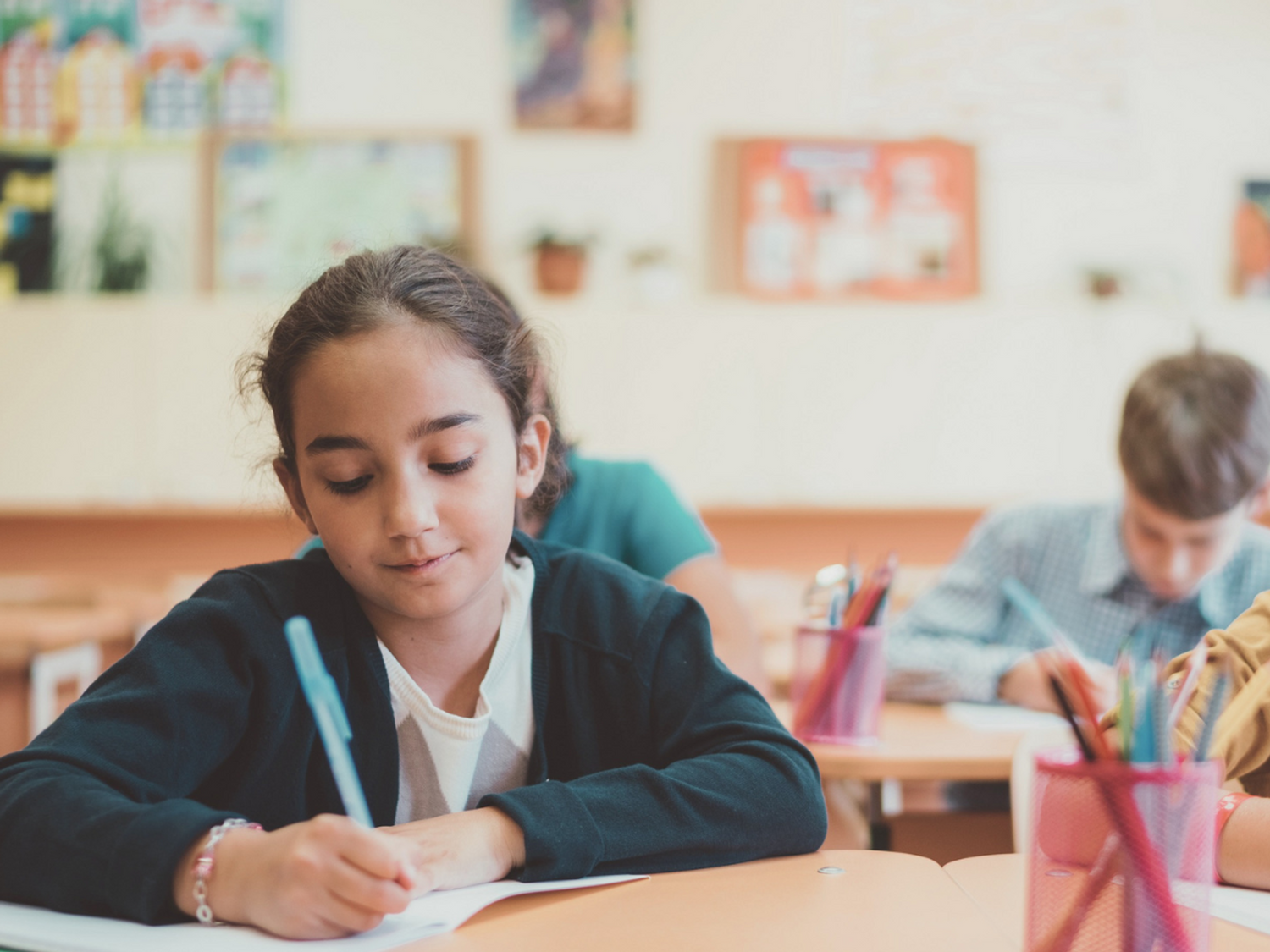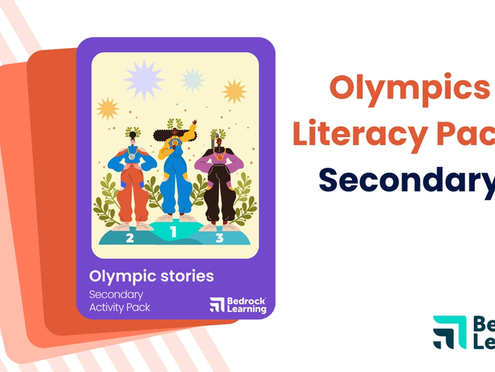They are the fundamental building blocks of language and communication.
However, nouns have a variety of subtypes, purposes and uses in a sentence. To help make learning about nouns more digestible, we have split our blog about nouns into two parts, helping you control the way you learn about and teach nouns.
In this blog, we will cover all the different types of nouns you may come across, some common challenges that they pose and some fun activity ideas for how to teach them.
Also in our Teaching Grammar Basics series, explore:
Singular vs. plural nouns
A plural noun is a noun that refers to more than one of something. For example, dogs is a plural noun as it refers to more than one dog. In contrast, dog is a singular noun as it refers to one of something.
Plural nouns can further be broken down into regular and irregular plural nouns.
Regular nouns become plural by adding an -s at the end.
For example:
- Dog -> dogs
- Table -> tables
- Spot -> spots
Irregular plural nouns are the nouns that really keep learners on their toes… in other words, they may prove a little challenging to master! Learn more about these here.
Concrete nouns vs. abstract nouns
Concrete nouns
Nouns can be classified as concrete or abstract.
Concrete nouns are those that can be felt, seen, smelled or tasted.
Some examples of concrete nouns are:
- mother
- flower
- pasta
- statue
- rucksack
- pencil
Abstract nouns
Abstract nouns are those that can only be felt or thought about but cannot be seen explicitly or touched or held. They can be ideas, concepts, feelings or traits.
Some examples of abstract nouns are:
- wisdom
- truth
- love
- bravery
- misfortune
- worry
- justice
Proper nouns
A proper noun refers to a specific person, place or thing. They are always capitalised, whether they are at the beginning of a sentence or not.
For example:
- Sarah
- Michael
- Sardinia
- Danetree Junior School
- United Nations
- Uncle Desmond
Common nouns
A common noun is the word used for a person, place or thing. It is general and non-specific.
For example:
- city
- girl
- computer
- road
Common nouns tend not to be capitalised unless they begin a sentence.
As with many stipulations in English grammar, there can be some quirks. It is good to be aware of this.
With this in mind, it seems to be acceptable to capitalise some common nouns such as Manager. This is mainly applicable to job titles and names of departments.
For example:
- Office manager
- Director
- Claims Department
- President
Collective nouns
A collective noun is used for a group of people or things. The nouns are singular, but they refer to a group.
For example:
- team
- flock
- choir
- shoal
- jury
It is a good time to point out that, in most cases, collective nouns use singular verbs as they are referring to a group of people or things as one single entity.
For example:
- My family is sporty.
- My school loves to play chess
However, you’ve guessed it, there are exceptions to this rule.
Predicate nouns
A predicate noun is a noun or noun phrase which is connected to the subject of the sentence. It further defines or explains the subject of the sentence. A predicate noun always follows a linking verb.
In the examples below, the predicate nouns or noun phrases are underlined in each sentence.
- Debra was my dear friend for years.
- Her favourite pastime is golf.
- Solar panels are an alternative source of power.
Compound nouns
A compound noun is the name given to a noun that is made up of two or more words.
For example:
- Paperclip
- Board of members
- Father-in-law
- Snowstorm
- Roommate
- Runoff
Compound nouns are common in English. The compound noun “snowstorm” is composed of two nouns, snow and storm. However, compound nouns don’t have to be made of two or more nouns; they can involve verbs, adjectives and prepositions.
Let’s take the compound noun “runoff” as an example. In this case, run is a verb and off is a preposition.
- During storm water runoff, compost stops pollutants from forming.
Activities for teaching compound nouns
1. Find your partner
As the teacher, you could have some compound nouns printed on a piece of paper in large font.
Cut these up so they are two or three separate words and hand out to the learners. They must find their partner, that is the person who has a word that can be put with their word to make a compound noun.
Some possible words to use:
- Toothpaste
- Bedroom
- Newspaper
- Seafood
- Football
2. Tell a story
Find some images or put together some images which tell a story. As you show the images to your students, tell them the story which should include several compound nouns.
As students listen, they must write down all the compound nouns that they hear.
3. Picture this!
Have a list of compound nouns ready. Split learners into two teams, team A and team B.
Pick a member of team A to come to the front of the classroom. Show them the word. They must then draw images to represent each part of the compound word to help their teammates guess the compound noun.
Use a timer and award points to make it more exciting and challenging.
Countable and uncountable nouns
Countable nouns are the nouns we can count. For example: two books, four bananas, six children, twenty buildings.
Uncountable nouns are nouns that we cannot easily count. We cannot say seven milk, five music, fifteen money. Instead, we say two glasses of milk or one litre of milk; some music, a lot of music; a little money, a lot of money. Abstract nouns are usually also uncountable nouns, for example:
- love
- happiness
- knowledge
For such uncountable nouns we use terms like a little, a lot of, some, a bag of, a litre of, a box of, a carton of to show quantity.
We tend to use a singular verbs with uncountable nouns, for example:
- This advice is very important.
Activities for teaching countable and uncountable nouns
1. Shopping lists
Use images of items learners would usually get while shopping and ask them to put them into a shopping list, using their knowledge of countable and uncountable nouns to ensure the list is formatted correctly.
For example, a picture of four oranges, a picture of three carrots, a picture of a carton of milk, a picture of a bag of sugar.
Ask them to write the shopping list, including the countable and uncountable items:
- 4 oranges (countable)
- 3 carrots (countable)
- A carton/litre/pint of milk (uncountable)
- A bag of sugar (uncountable)
2. Categorisation
Create a list of words, some uncountable and some countable nouns.
For example:
- clothes
- apple
- money
- sunglasses
- time
- family
- cheese
- idea
Learners should put them under one of two headings: countable or uncountable.
3. Match the quantifier
Start by having learners come up with as many uncountable nouns as they can along with the quantifiers that are used to count them. These could be displayed on an interactive white board.
Some examples could be:
- A little bit of flour
- A little rest
- A lot of money
- A great deal of money
- A large amount of milk
- Some tea
- Plenty of furniture
- Any music
- Lots of luggage
Next, write the quantifiers only on small pieces of paper and put them in a hat.
Erase the uncountable nouns from the board, and then give students turns picking a quantifier from the hat and using it in a sentence with a suitable uncountable noun. Each uncountable noun can only be used one time.
It is useful for learners to become familiar with these different classes of nouns. It will help them understand the different rules around the different nouns and how they are used. They will grow in experience and confidence in using these words correctly and for effect in their own writing composition and enjoy when others do the same.
To learn more about how Bedrock’s core curriculum uses engaging video and bespoke prose to reinforce grammar instruction, explore our grammar curriculum or start your free trial.




